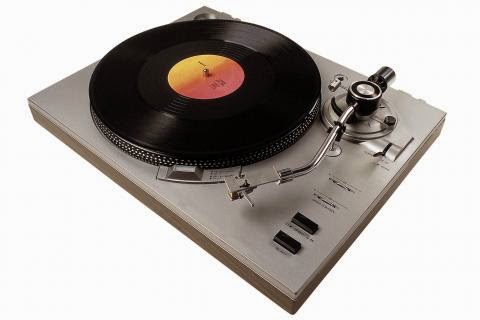It seems like a lot of you enjoy reading what kind of gear I like to use, as evidenced by the views for my top 10
mics,
mic preamps,
EQs and
compressors. I'm going to continue the series with my "Top 10 Most Used Plugins."
Keep in mind that I use a lot of other plugs by other manufacturers, but these are the ones that I find are used somewhere on almost every mix that I do. Also, I'm a Pro Tools user, so some plugs are PT-centric.
1.
Pro Tools 7 Band EQ: I love this plugin because it sounds pretty good, doesn't eat up any system resources, and has hi and low pass filters. Sometimes I'll just use it for the filters only (like on effects), but I always find a lot of these sprinkled across a mix in many other places.
2.
Universal Audio 1176LN: My go-to compressor in most cases. UA has a lot of different variations in their
Classic Limiter bundle, but this is the one that works best for me. I find it can just about work on anything if you adjust the attack and release times, but I'll almost always use it on bass for sure, toms, and probably vocals (although the UA LA-2A works great there as well).
3.
PSP Vintage Warmer: Everything I use this on just sounds better, especially the mix buss. I rarely use much of it, but it makes a big difference on the glue of a final mix.
4.
Lexicon PCM Native Hall: I love all the Lexicon reverbs, but I find I use the PCM Hall almost all the time, mostly for things that need depth like strings and pads. The
Lexicon PCM Plate is a close second, but the Pro Tools
D-Verb can be surprisingly good in many places as well.
5.
Universal Audio Teletronix LA-3A: Back in the hardware days I always used these on electric or acoustic guitars, since I've never found anything better on those instruments. It's no different with the plugin. It's also good on keys.
6.
Soundtoys MicroShift: I looked around for a long time for a plugin with that old
Harmonizer sound. The MicroShift is the first plug that I found that really does it (although you can also now get the same sound from the
Eventide Ultrachannel). It's dead easy to use and provides that extra presence or smoothing like nothing else.
7.
Universal Audio Precision Limiter: There are other great limiters (like the
Waves L series and the
Slate Digital FG-X), but this is my favorite for the stereo buss to just take care of those nasty peaks that result in overs. I don't use much of it (a dB or 2), and it's very transparent already, so you don't hear it while it does the job.
8.
TT Dynamic Range Meter: This is an excellent plugin that tells you when you're squashing the mix too much. It provides precision output metering, plus that great dynamic range meter, and its FREE. Let's keep the hypercompression out of music. Use this meter.
9.
Pro Tools Long Delay: There are other great delay plugs (Soundtoys
Echoboy and the PSP
42 and
85 come to mind), but this is the one I reach for all the time. It's not as versatile as many plugins, but it's fast to set up, and once again, takes up virtually no system resources (which can be important on a large mix). I alter it with a previously mentioned PT 7 Band EQ ahead of it to get the sound I need and keep it out of the way of the vocal.
10.
Sample Magic Magic AB: This is one of my new favorites. It provides an instant AB against any audio file. You can load up to 9 sources to AB against, and easily match the level between them all for a tight comparison. Plus you can even loop a section if you want. It's great for making sure your mix is really in the ballpark.
Like I said before, there are a lot of other great plugins that I use by a variety of companies, and there are many that I haven't tried yet, but these are the ones that I use on every single mix that I do.
What are your favorites?
----------------------------------





